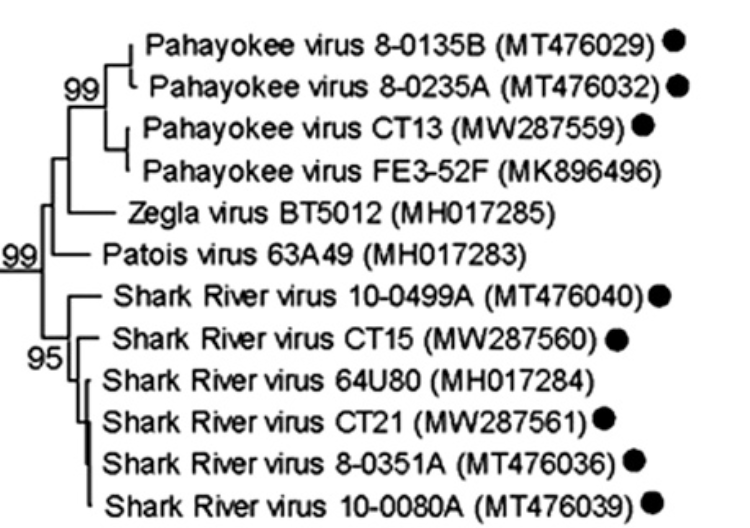Abstract
Mosquitoes were collected for 12 consecutive months beginning June 2016, from 11 locations in the Florida Everglades, Collier County, and tested for viruses by isolation in Vero cells and subsequent identification. One species complex and 31 species of mosquitoes were identified from 668,809 specimens. Ochlerotatus taeniorhynchus comprised 72.2% of the collection. Other notable species were Anopheles crucians complex, Culex nigripalpus, Cx. erraticus, and Cx. cedecei. Seven species of virus were identified from 110 isolations: Everglades, Gumbo Limbo, Mahogany Hammock, Pahayokee, Shark River, Tensaw, and West Nile viruses. Everglades, West Nile, Tensaw, and Mahogany Hammock viruses were most frequently isolated. Largest numbers of viruses were identified from Cx. cedecei, Cx. nigripalpus, and An. crucians complex. Five species of virus were isolated from Cx. cedecei. Viruses were isolated from mangrove, cypress swamp, hardwood hammock, and sawgrass habitats. West Nile virus was isolated August through October when Cx. nigripalpus was most abundant. Everglades virus was the most frequently isolated virus from nine species of mosquitoes collected from June through August. Tensaw virus was isolated primarily from Anopheles species. Isolations were made in July, August, January, February, and April, suggesting that this virus may be present in host-seeking mosquitoes throughout the year. Mahogany Hammock, Shark River, Gumbo Limbo, and Pahayokee viruses were isolated primarily from Cx. cedecei from June through December. Shotgun metagenomic sequencing was used to document that seven pools of Cx. cedecei were infected with two arboviruses. As communities expand into the Everglades, more humans will become exposed to arboviruses.
